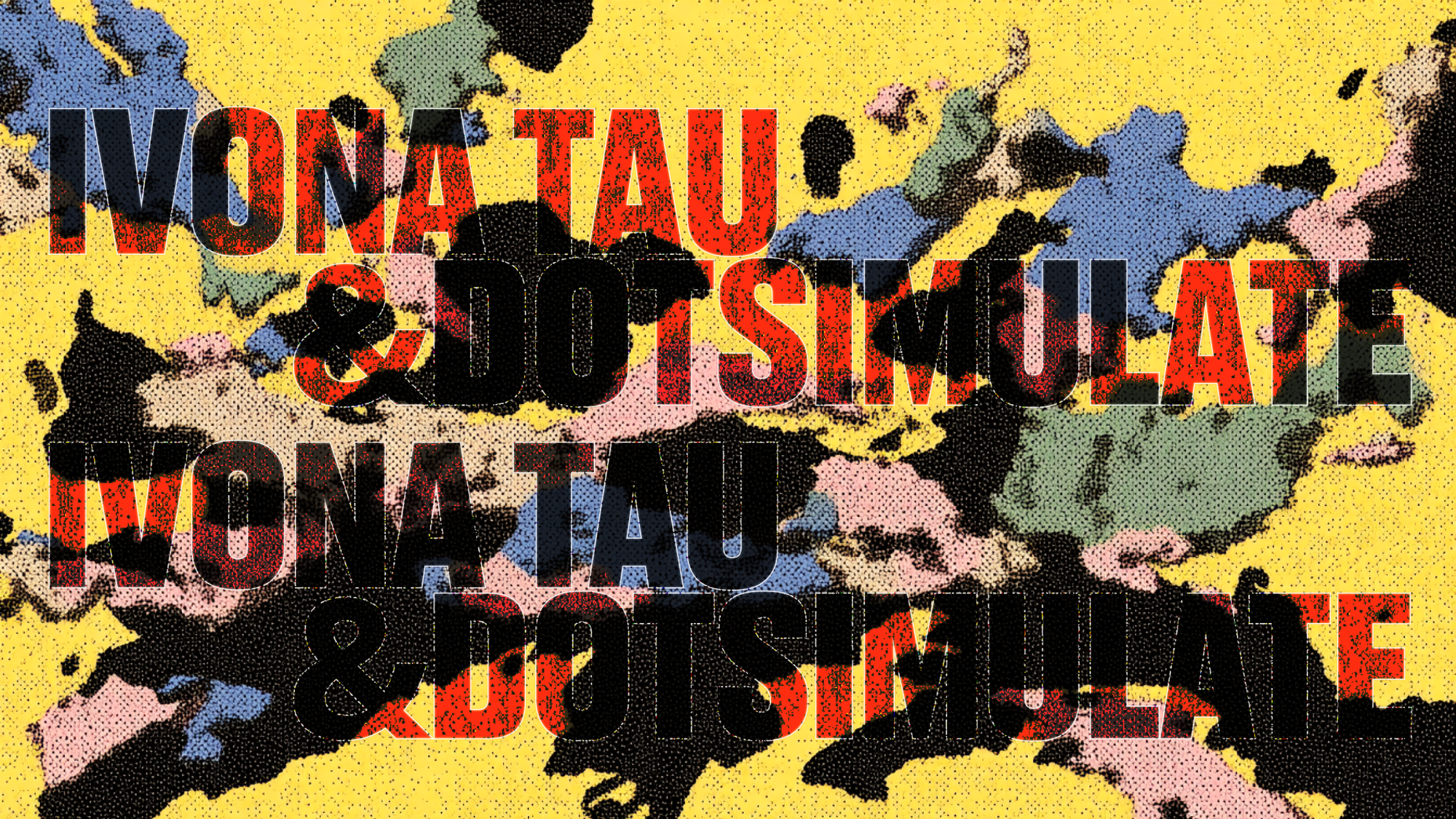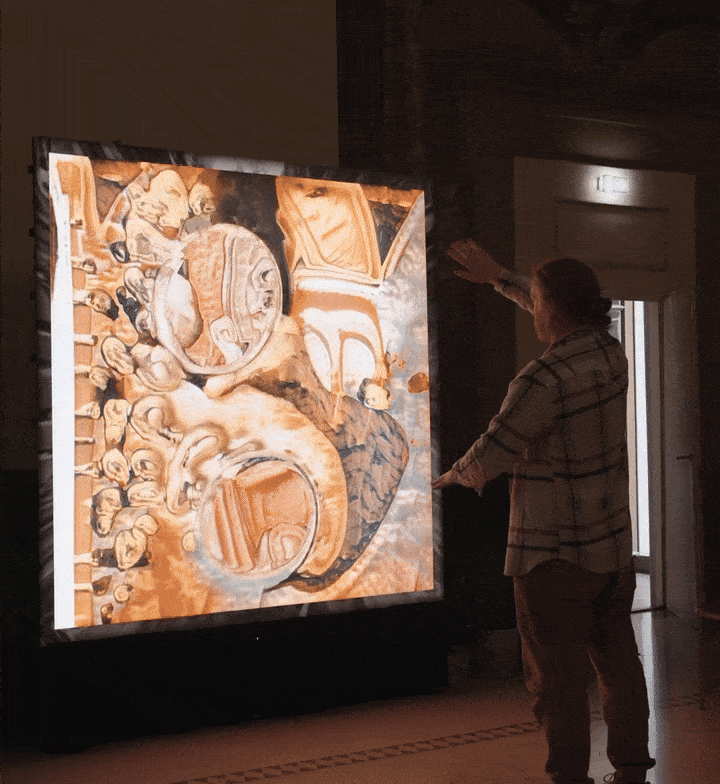Bringing Art to Life: Artist Interview with Ivona Tau and Lyell Hintz
We sat down to discuss AI models, TouchDesigner, and the Rarible New Media Art Residency.

This week at Rarible we’re launching our Open Call for artists and creators interested in our New Media Art Residency. Work with top digital artists in the NFT space, learn how to create interactive art installations using TouchDesigner and Comfy UI, and exhibit your work at NFC Lisbon – one of the biggest NFT conferences in the world.
This New Media Art Residency was born after a recent collaboration between our very own Luca Martinelli and artists Ivona Tau and Lyell Hintz, who created a hugely successful interactive installation at Primavera Digitale in Florence earlier this month.
Interactive Installation at Primavera Digitale
Ivona and Lyell’s ‘GAN interaction’ at Primavera Digitale was all about collisions and collaborations. Past, present, future. Digital space and physical space. The human body and the AI mind.
This was the first iteration of an experimental collaboration. The video was created by new media artist Ivona Tau using a GAN model (a specific type of neural network) trained on images of Florentine art and architecture. Artist and coder Lyell Hintz then took this video work and brought it to life using TouchDesigner.

Viewers entered the grand space of the Palazzo Pucci in Florence, where the collaborative video work was installed on a 2 x 2 meter screen that responded to the hand movements of the audience. Swirling vortexes opened up within the video piece, revealing another world, another time beneath. The next iteration of this collaboration will continue to explore the possibilities of interactive art, whilst also investigating how to create collectible NFTs from IRL experiences. Watch this space.
We sat down with the artists to learn more about their process and what they have in store for us all at NFC Lisbon.
AI models and art making
Rarible: Ivona, tell us about how you use GANs in your practice. What is it about this slightly older tech that appeals to you?
Ivona Tau: “I just really felt they were perfect for the stories I wanted to tell in this project. GANs are able to create this very smooth linear space, this really wonderful topological space, something that is not possible with diffusion based models.
They can be better used for ideas where we want to express moving between concepts and in my work it's often the case that I want to move from one thing to another; to move between memories, from nature to civilization, etc”.
video work created by Ivona using custom GAN model
Rarible: What other tools are you using and how do you approach working with different AI models?
Ivona: “I'm using all kinds of tools. I'm training Flux models, I’m using Dream Booth, I’m using Stable Diffusion, and more. It just all depends on what kind of project I'm working on. I'm not just blindly choosing to try the new Mid Journey but really thinking about the purpose of the project I'm doing.
It's really important to get to know the tools they're using as much as possible and not really to be caught up in this never-ending game of trying things is good, but you still want not to get lost in just testing things out. You want to go deeper and you want to really find the ways to tell your stories”.
Lyell: “Yeah, as an artist, I think it's important to approach these AI tools in a way that's intentional because these models are like black boxes and they're very powerful. One thing about the GAN model which is actually really interesting is it is kind of unpromptable in a sense and you're feeding it data very intentionally.
GANs feel less like a tool in themselves and more like a technique—almost like a painting method you learn and then apply. In contrast, larger AI models can feel like slot machines. At worst, you’re just pulling a lever. At best, you’re steering a randomness engine toward something intentional”.
video work created by Ivona using custom GAN model
Rarible: Lyell, you were in charge of transforming Ivona’s artwork into an interactive, on-site installation…how did you approach this?
Lyell: “I left it all open-ended until I arrived. That’s often how I work—I trust myself to figure it out on the ground. One of the great things about collaborating is the support. Not as a fallback, but knowing Luca and Ivona were contributing strong material—like the GAN model—was huge.
We landed on a hand-based interaction using a webcam. As you moved your hand, it revealed a few seconds into the future of the generated sequence. There were a few different interaction modes I’d considered, but given the space—the LED wall, the grandeur of the palace, the stillness of historic paintings—it became clear that something hyperactive or particle-based would’ve felt totally out of place. In the end, we created something quieter, more fitting to the environment, and I think that worked in its favor”.
Rarible: Ok, let’s get technical – how did you actually create the interactions?
Lyell: “We used a really small off-the-shelf webcam that we bought from a tiny electronics store in Florence. For tracking, we used MediaPipe by Torren Blankensmith and Dom Scott—an open-source tool for hand and face tracking that works with TouchDesigner”.
“The interaction itself was driven by the viewer’s hands. They controlled a GLSL-based fluid simulation—a fairly classic setup, often seen in TouchDesigner tutorials. This version was more advanced, tracking multiple points like hands and wrists. That data powered a fluid simulation, which was then heavily blurred and bloomed to create a thick, viscous overlay. Then we ran that through a Time Machine—a TouchDesigner component that plays back video time per pixel. For the viewer, it felt like your movements were breaking into the future”.
Rarible: It’s interesting to see such a direct interplay between the physical world and the digital world. You don’t often get that in digital art. Lyell, how do you both think about the viewer’s role in a piece like this?
Lyell: “It’s kind of funny—digital art, by nature, can reflect the viewer. But before interactive sensors or AR filters, the viewer wasn’t really centered. In art history, they haven’t always been the focus either. I’m not sure the viewer should be the most important part, but it’s compelling to work that way”.
Rarible: And Ivona, how does the human factor into your process?
Ivona Tau: “What fascinates me with AI is, even if a model is running random iterations, there’s always a human in the loop. The GAN used in Florence was carefully curated, the dataset trained—it’s not pure randomness. But it all comes to life when someone sees it, feels something, and gives it meaning. That’s where the emotional value truly begins”.
Playing with the interactive installation
Rarible: There’s another collaboration in the near future, at NFC Lisbon. How are you going to approach this next project?
Lyell: “Lisbon will be different, especially because Ivona will be there in person. That means more real-time collaboration. In Florence, we only had a couple of calls before the show went live. It worked, but having the other collaborator present makes a big difference”.
Ivona Tau: “The key is to reflect on what worked best—especially the relationship between the body and the artwork. Making that interaction meaningful is usually one of the strongest elements. We don’t want it to just be a spectacle—move your hand, something happens. We want to ask: What does your interaction mean for the artwork? What does it reveal? How does it change it? That’s the real challenge: how can a viewer become part of the artwork in a meaningful way?”
Ivona Tau and Lyell Hintz will be collaborating again at NFC Lisbon (June 4 - 6 2025), creating a new interactive work that viewers can mint on-site. Also exhibiting will be Neurocolor x Spencer and Machine Delusions.
Learn from TouchDesigner experts Lyell Hintz, Machine Delusions and Cester Spencer and exhibit your work at NFC Lisbon.
Read all about the open call and apply here.

